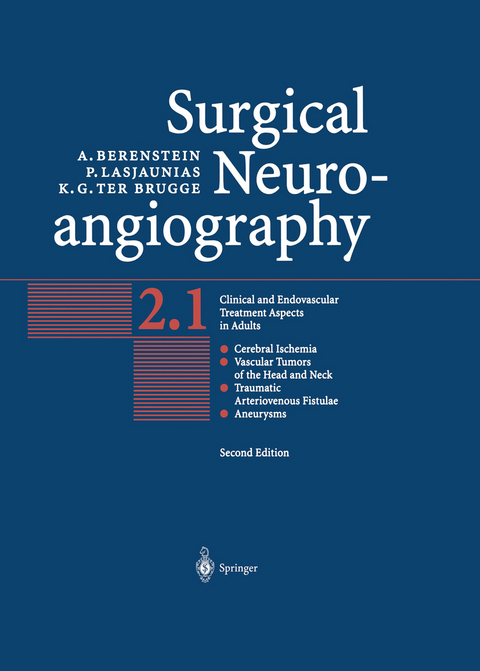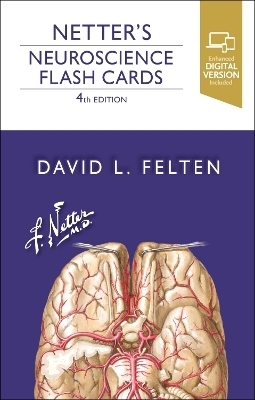
Surgical Neuroangiography
Springer Berlin
978-3-540-41668-5 (ISBN)
lt;p>Surgical Neuroangiography: Clinical and Interventional Aspects in Adults covers a variety of protocols and strategies combining functional vascular anatomy with a complete appreciation of the various disease processes, their pathophysiology, clinical presentation, and natural history, as well as recent technological advances. The newer endovascular techniques that apply to embolization of aneurysms, vascular malformations, and tumors of the spine, spinal cord, brain, and maxillofacial areas are reviewed. Novel techniques of revascularization for occlusive vascular diseases in the brachiocephalic and cerebral vasculature are expanding and revolutionizing the field. Implementing optimally efficient and safe strategies for occlusion or revascularization of arterial or venous structures requires the knowledge of collateral circulation covered in this volume. Alejandro Berenstein, Pierre Lasjaunias, and Karel ter Brugge, pioneers in the field with over 20 years of experience, present the second volume of the second edition of Surgical Neuroangiography, combining volumes 2, 4 and 5 of the previous edition and adding a new section, "Occlusive Vascular Diseases."
Comprehensive, practice-oriented work on vascular intervention in adults and children
Written by the leading experts with many years' experience in research and teaching
Richly illustrated overview of all treatment modalities
of Volumes 2.1 and 2.2.- 1 Occlusive Vascular Disease.- 1.1 Introduction.- 1.2 Arterial Occlusive Disease.- 1.3 Venous Occlusive Disease.- 2 Dural and Bony Tumors.- 2.1 Introduction.- 2.2 Meningiomas.- 2.3 Other Bony and Dural Tumors.- 3 Nasopharyngeal Tumors.- 3.1 Juvenile Angiofibromas.- 3.2 Other Nasopharyngeal Tumors.- 3.3 Conclusion.- 4 Paragangliomas.- 4.1 Introduction.- 4.2 Embryology.- 4.3 Epidemiology.- 4.4 Pathology.- 4.5 Natural History.- 4.6 Clinical Aspects.- 4.7 Differential Diagnosis.- 4.8 Pretherapeutic Evaluation.- 4.9 Therapeutic Strategies.- 4.10 Technical Aspects of Embolization.- 4.11 Complications of Embolization of Paragangliomas.- 5 Other Head and Neck Tumors.- 5.1 Thyrolaryngeal Tumors.- 5.2 Craniofacial Tumors.- 6 Traumatic Arteriovenous Fistulae.- 6.1 Introduction.- 6.2 Traumatic Carotid Cavernous Fistulae.- 6.3 Other Traumatic Arteriovenous Fistulae.- 7 Aneurysmal Vasculopathies.- 7.1 From Aneurysm to Aneurysmal Vasculopathies.- 7.2 Extradural Aneurysms.- 7.3 Intradural Aneurysms.- 7.4 Intradural Artery Dissections.- 7.5 Intradural Giant Saccular and Nonsaccular Arterial Aneurysms.- 7.6 Infectious, Immune, and Inflammatory Intradural Aneurysms.- 7.7 Flow-Related Arterial Aneurysms and Other Aneurysmal Vasculopathies.- 7.8 Therapeutic Management.- 8 Dural A rteriovenous Shunts.- 8.1 Historical Review.- 8.2 Pathophysiology.- 8.3 The Osteodural-Venous Complex.- 8.4 Classification.- 8.5 Clinical Presentation of Dural Arteriovenous Shunts.- 8.6 Natural History.- 8.7 Progression of Symptoms.- 8.8 Pretherapeutic Evaluation.- 8.9 Therapeutic Aspects.- 9 Cerebral Vascular Malformations: Incidence,Classification, Angioarchitecture, and Symptomatology of Brain Arteriovenous and Venous Malformations.- 9.1 Incidence of Cerebral Vascular Malformations.-9.2 Principles of Classification.- 9.3 Classification of Cerebral Vascular Malformations.- 9.3.1 Brain Arteriovenous Shunts.- 9.3.1.1 General Appearance of Arteriovenous Shunts.- 9.3.1.2 Multiple Brain Arteriovenous Malformations.- 9.3.1.3 Topographic Analysis of Brain Arteriovenous Malformations.- 9.3.1.4 Angioarchitecture of Brain Arteriovenous Malformations.- 9.3.1.5 Clinical-Angioarchitectural Correlation in Brain Arteriovenous Malformations.- 9.3.2 Venous Variations,Malformations,and Mixed Lesions.- 9.3.2.1 Developmental Venous Anomalies.- 9.3.2.2 Cavernous Hemangiomas.- 9.3.2.3 Cerebral Cavernous Malformations.- 9.3.2.4 Occult and Cryptic Malformations.- 9.3.2.5 Sturge-Weber Syndrome.- 10 Goals and Objectives in the Management of Brain Arteriovenous Malformations.- 10.1 Introduction.- 10.2 Indications for Treatment of Brain Arteriovenous Malformations.- 10.3 Therapeutic Management Strategy.- 10.4 Embolization.- 11 Spinal Arteriovenous Malformations.- 11.1 Parachordal Arteriovenous Fistulae (Extracranial, Vertebro-Vertebral, Paraspinal, Extradural, and Extraspinal Arteriovenous Fistulae).- 11.2 Spinal Cord Vascular Lesions.- 11.3 Spinal Cord Arteriovenous Malformations.- 11.4 Spinal Cord Hemodynamics.- 11.5 Treatment of Vascular Lesions.- 12 Spinal Dural Arteriovenous Fistulae.- 12.1 Pathology.- 12.2 Pathophysiology.- 12.3 Clinical Presentation of Spinal Dural Arteriovenous Fistulae.- 12.4 Imaging of Spinal Dural Arteriovenous Fistulae.- 12.5 Treatment of Spinal Dural Arteriovenous Fistulae.- 13 Tumors of the Spinal Column and Spinal Cord.- 13.1 Introduction.- 13.2 Spinal Angiography.- 13.3 Angiographic Protocol.- 13.4 Embolization.- 13.5 Benign Tumors.- 13.6 Malignant Tumors.- 13.7 Spinal Cord Tumors.- 13.8 Other Intradural Vascular Tumors and SpinalHemorrhage.- 14 Technical Aspects of Surgical Neuroangiography.- 14.1 Introduction.- 14.2 Patient Preparation.- 14.3 Anesthesia.- 14.4 Arteriotomy Sites.- 14.5 Catheters and Delivery Systems.- 14.6 Guidewires.- 14.7 Embolic Agents.- 14.8 Opacifying Agents.- 14.9 Chemotherapy.- 14.10 Miscellaneous.- 14.11 Flow Control.- 14.12 Postembolization Care.- 14.13 Complications of Embolization.- 14.14 Follow-up.- 14.15 Combined Endovascular Treatments.- 14.16 Techniques of Carotid Angioplasty and Stenting.- References.- Subject Index for Volumes 2.1 and 2.2.- Manufacturers.
From the reviews:
"The presentation of the book is admirable with most chapters beginning with discussion of basic pathophysiology and continuing with clinical aspects and practical advice. ... The authors are careful not to present simply the latest technological advances, but to underpin the book with clinicopathological aspects of vascular disease which they regard as fundamental for the successful management of these difficult cases. ... It functions best as a reference text and has an accessible and easy to use index which helps in this regard." (Justin Cross, Acta Neurochirurgica, 2005)
| Erscheint lt. Verlag | 9.3.2004 |
|---|---|
| Zusatzinfo | XLVIII, 1287 p. In 2 volumes, not available separately. |
| Verlagsort | Berlin |
| Sprache | englisch |
| Maße | 193 x 260 mm |
| Gewicht | 4654 g |
| Themenwelt | Medizin / Pharmazie ► Medizinische Fachgebiete ► Neurologie |
| Schlagworte | Cerebral • classification • dangerous vessels • Diagnosis • Gefäß (Medizin) • maxillofacial • Neurochirurgie • Schädel • spinal cord • Stent • Tumor • vascularisation |
| ISBN-10 | 3-540-41668-4 / 3540416684 |
| ISBN-13 | 978-3-540-41668-5 / 9783540416685 |
| Zustand | Neuware |
| Haben Sie eine Frage zum Produkt? |
aus dem Bereich


